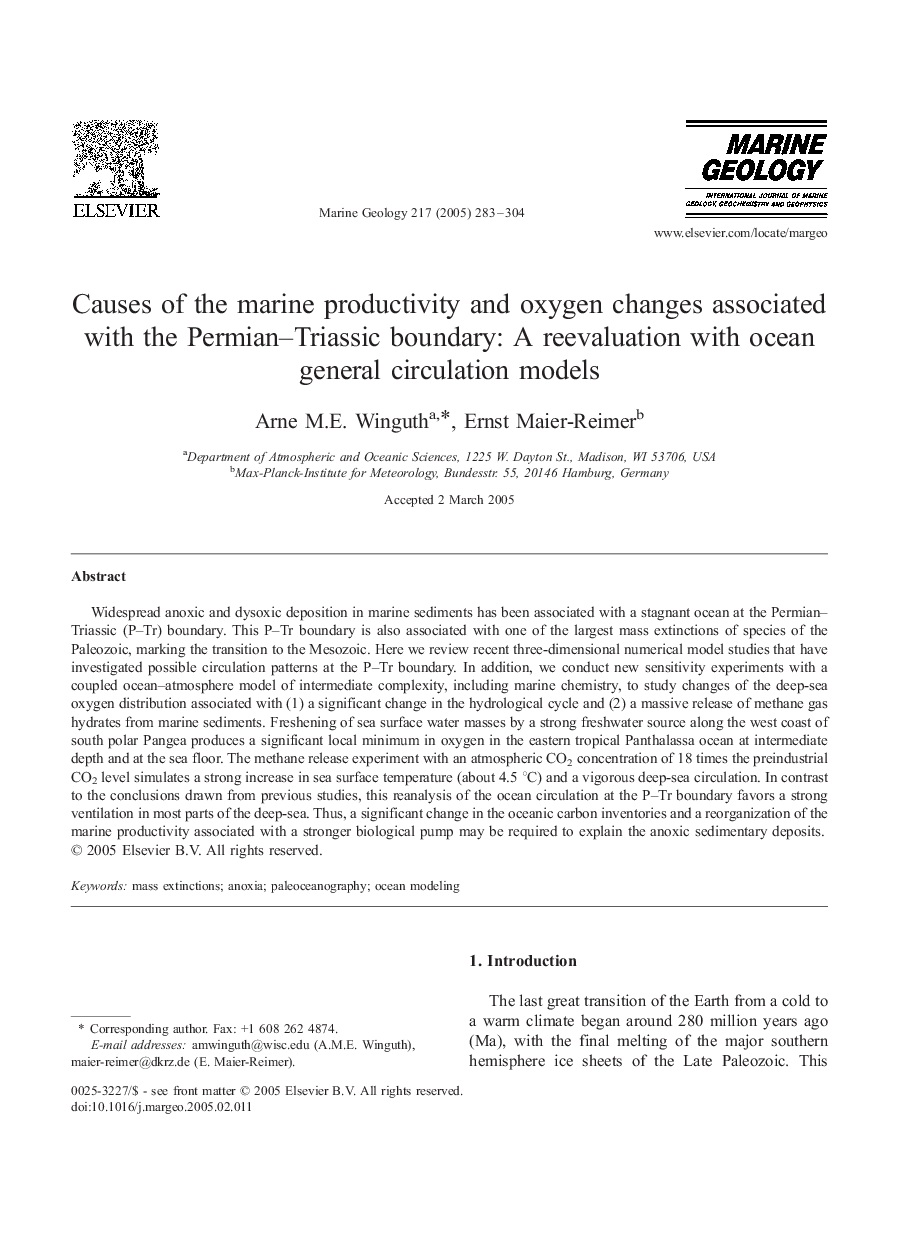| Article ID | Journal | Published Year | Pages | File Type |
|---|---|---|---|---|
| 9532500 | Marine Geology | 2005 | 22 Pages |
Abstract
Widespread anoxic and dysoxic deposition in marine sediments has been associated with a stagnant ocean at the Permian-Triassic (P-Tr) boundary. This P-Tr boundary is also associated with one of the largest mass extinctions of species of the Paleozoic, marking the transition to the Mesozoic. Here we review recent three-dimensional numerical model studies that have investigated possible circulation patterns at the P-Tr boundary. In addition, we conduct new sensitivity experiments with a coupled ocean-atmosphere model of intermediate complexity, including marine chemistry, to study changes of the deep-sea oxygen distribution associated with (1) a significant change in the hydrological cycle and (2) a massive release of methane gas hydrates from marine sediments. Freshening of sea surface water masses by a strong freshwater source along the west coast of south polar Pangea produces a significant local minimum in oxygen in the eastern tropical Panthalassa ocean at intermediate depth and at the sea floor. The methane release experiment with an atmospheric CO2 concentration of 18 times the preindustrial CO2 level simulates a strong increase in sea surface temperature (about 4.5 °C) and a vigorous deep-sea circulation. In contrast to the conclusions drawn from previous studies, this reanalysis of the ocean circulation at the P-Tr boundary favors a strong ventilation in most parts of the deep-sea. Thus, a significant change in the oceanic carbon inventories and a reorganization of the marine productivity associated with a stronger biological pump may be required to explain the anoxic sedimentary deposits.
Related Topics
Physical Sciences and Engineering
Earth and Planetary Sciences
Geochemistry and Petrology
Authors
Arne M.E. Winguth, Ernst Maier-Reimer,
